Welcome to aircraft ownership! By this point, you’ve got a pilot license and are considering buying an airplane. Or, maybe you want to get your pilot’s license and are doing some preliminary research. No matter what order you do it in, there are some things you need to know before making a purchase of this size.
In this article, we’ll cover what you need to know in your first year of aircraft ownership. From financial expectations to maintenance requirements, we’ll talk about all your questions when it comes to safety and operational success.
Understanding Aircraft Maintenance
With aircraft ownership comes aircraft maintenance. There are a couple different types of maintenance: scheduled and unscheduled.
Scheduled Maintenance
Scheduled maintenance includes the annual inspection, which is a Part-91 requirement, the 100-hour inspection, and routine upkeep like oil changes, tire wear, and battery checks.
Unscheduled Repairs
Unscheduled repairs include common first-year surprises like avionics issues, corrosion, and brake wear.
It’s important to note that, according to AOPA, the FAA states that only airworthy aircraft should be operated. “Airworthy,” means the aircraft conforms to its type design and is in a condition for safe operation.
There are also different regulations depending on what type of operator you are. A part 91 operator is general aviation and not mandated to adhere to TBOs in the same way as part 135 operators. and a part 135 operator is only required to comply with the manufacturer’s recommended maintenance programs, including TBO recommendations.
Navigating Compliance
As we mentioned above, airworthiness is a huge part of compliance. You can’t fly your plane if it isn’t deemed airworthy by the FAA. You are also required to register your aircraft with the FAA.
Non-compliance can lead to penalties, fines, license suspensions, and legal action, so it’s important to be vigilant about requirements surrounding your aircraft.
Airworthiness directives are legally enforceable rules issued by the FAA to address known safety deficiencies in specific aircraft models. Here are a few things that fall under ADs and some best practices to stay compliant:
- Documentation and record keeping
- Create a maintenance calendar
- Find certified mechanics and FAA-certified repair stations
- Stay up to date on compliance and regulations
- Conduct regular self-audits
Budgeting for Aircraft Ownership
Costs are going to vary depending on what type of plane you have and where you’re located, but here are some general costs associated with your first year of aircraft ownership.
- Hangar space ($3,000)
- Fuel ($2,500)
- Insurance ($1,500)
- Routine maintenance ($1,000-$3,000)
- Registration, navigation charts, unexpected repairs ($500-$1,000)
You can expect to spend upwards of $11,000 in your first year of aircraft ownership.
Some of these costs can be mitigated by doing some maintenance yourself, such as preventative maintenance tasks including servicing landing gear and changing tires, oil and filter changes, etc. Read more about what you can do yourself in our blog post here.
Aircraft ownership can be expensive, but it’s crucial to make proper investments so you don’t risk your safety and the safety of others.
Aircraft ownership is an exciting and worthwhile adventure, and if you’re thinking about taking the plunge, we are excited for you! We obviously love aviation and are passionate about the industry, and we hope you are too.
AAI Can Exchange, Overhaul, and Provide Support for Your Aircraft
At AAI, we want to support you in your first year (and years after) of aircraft ownership. Cutting corners or sacrificing quality is not an option. You are responsible for the safety of everyone who boards your aircraft. When you work with us, you work with a company that is certified and trustworthy.
Detailed, thorough, and expert work is required to get the job done the right way. At AAI, we know your ultimate goal is to get your plane fixed so you can fly. That’s why we go above and beyond to help you avoid extra costs by creating repairs and manufacturing the parts on your aircraft that are prone to corrosion and wear, like landing gear components.
Aircraft maintenance and overhaul require quick turnaround times. You don’t want a hangar full of planes propped up on jacks, creating a traffic jam for everyone trying to maneuver around them. AAI completes inspections and repairs in-house so that parts get turned around quickly, and you can return your aircraft to normal operation.
Do you have questions about AAI’s process or available parts? Contact us for more information and be sure to sign up for our Frequent Flyers Email Newsletter to get our articles, updates about industry events, and links to our favorite online content delivered right to your inbox every month.
